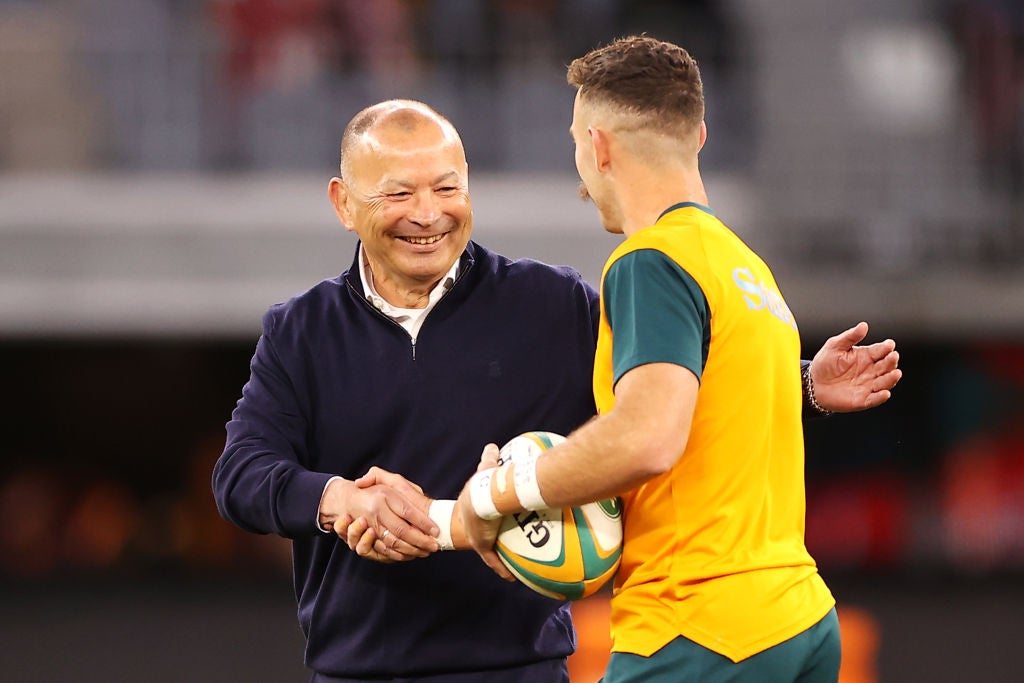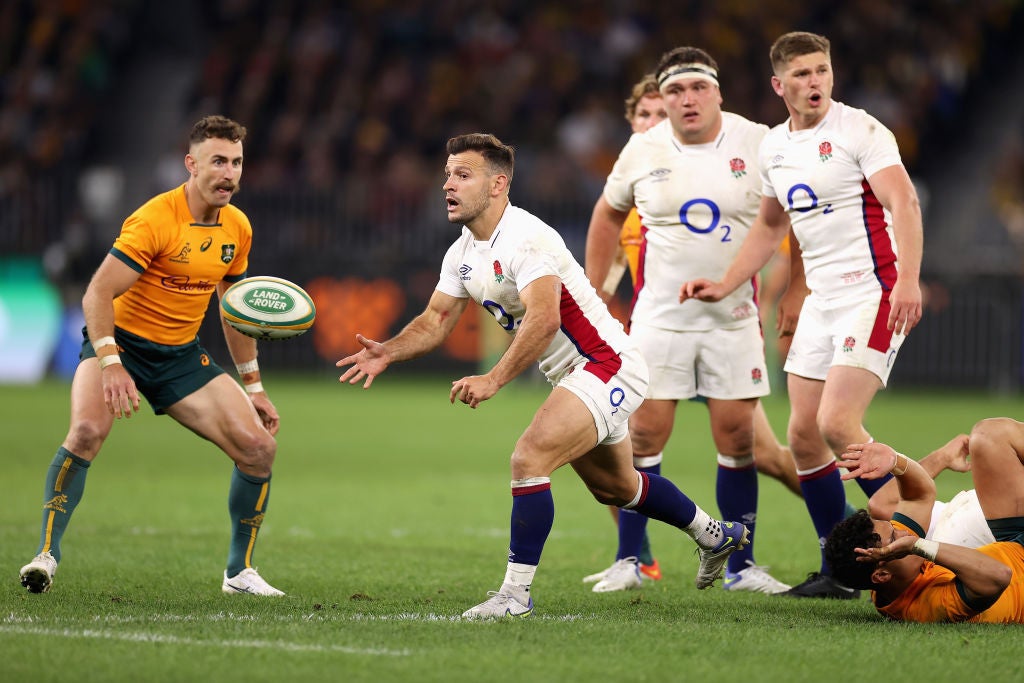
The sounds, sights and scents of more than a century of Australian history are infixed in the timber and iron of the Sydney Cricket Ground. It is a true suburban sporting temple, place of athletic legend and legends that began as a patch of grass open for public recreation in the middle of the 19th century.
Rugby union has long lineage there: it was at the SCG in 1899 that the Australian national team played for the first time, beating a touring party from the British Isles 13-3 in front of the Members’ and Ladies’ Pavilions that still stand, largely unspoiled, providing grand backdrop in the northwestern corner. Across the next 80 years or so, the Wallabies’ visits were relatively frequent. The great Ken Catchpole’s career was ended there in 1968; eleven years later, the All Blacks’ 30-year run of Bledisloe Cup dominance was at last overturned on SCG soil.
International rugby union no longer calls in often. Saturday’s third Test between the Wallabies and England will be the first at the ground since 1986, and could be the last. Across the way in Moore Park, the sprawling sporting heart of the city, the rebuild of the Sydney Football Stadium will soon be complete; the Wallabies will play there for the first time when they host South Africa during the Rugby Championship later this year. Australia, and Sydney, are not short of first-class sporting amphitheatres.
So, for some, this visit to the SCG requires a special saunter down memory lane. Like plenty of Sydneysiders, Eddie Jones’ formative years were spent in the stands, and the England head coach has looked to his own memories ahead of the denouement of a simmering series, challenging his side to emulate a great Australian captain as they seek victory.
“I was out there when [John] Snow knocked out [Terry] Jenner and there was obviously a bit of discourse going on between the fans and John Snow,” Jones recalled of the 1970-71 Ashes, when the great Sussex and England fast bowler was accosted on the boundary by one Australian fan having left Jenner bloodied by a sharp bouncer.
“And [I was] also watching when Ian Chappell strode on for his first time as Australian captain. That’s how we want to play on Saturday, like Ian Chappell did when he walked on the field and owned it. Play with plenty of purpose, play with plenty of energy, play together and we’re looking forward to the challenge.”
Perhaps due to the fact that so much now rests upon this decider, there has been a marked elevation of intensity in the off-field sledging this week, igniting the hostilities that have bubbled throughout the 160 minutes of on-field action in the series so far. Nic White, who wins his 50th cap, said on Tuesday that Australia “would not be baited” by England’s on-field provocation, the scrum-half having been introduced to Ellis Genge’s elbow early in last week’s encounter.

Jones, meanwhile, noted his disapproval of a perceived lack of promotion of the series, suggesting that Dave Rennie’s side were not doing all they could to push the sport ahead of a defining clash.
“We need rugby to be a strong sport and World Rugby needs Australia to be a strong rugby country,” Jones said. “There’s always a battle with NRL and AFL. We need rugby to be a bit more prominent. We’re trying to build the game up. 1-1 decider. There’s got to be equal effort from the other team, too.”
It is a busy sporting time and players and coaches in both camps relished the fearsomely physical deciding State of Origin contest in Brisbane on Wednesday. Given the injury toll of this series and the worry brain injuries, a truly brutal encounter of supreme intensity did not always make comfortable viewing, but the Wallabies took particular notice of the ferocity with which both Queensland and New South Wales went at one another from the world go.
“Watching that Origin game made me look forward to our big game with that intensity right from the start,” enthused Suliasi Vunivalu, the NRL convert set for a debut on the wing from the bench.
“We have been lacking that with the Wallabies for our first 20 minutes, so if we can bring that up and shut the Pommies up we’ll do a good job.”
Both coaches are forced to make changes given the injury toll. The promising Harry Wilson is an eye-catching addition to the Australian back row, while Reece Hodge, jettisoned by Rennie at the start of the series, is recalled at full-back.

Two young locks making a first start, Nick Frost for Australia and Ollie Chessum for England, will battle in the engine room heat, with Chessum joined in promotion to the visitors’ starting pack by Lewis Ludlam. Danny Care starts ahead of Jack van Poortvliet despite the youngster’s standout performance last week, with Jones hoping to lessen the glare on his young scrum-half and believing Care to be the right character for this contest.
Immortalised in bronze around the SCG are many of Australia’s sporting greats: Trevor Allan, Betty Cuthbert, Dally Messenger and more. While the participants in this encounter are unlikely to be afforded such commemoration, the romance of the venue and the rediscovered rancour of this rivalry could just make this a deciding game to remember.
New Zealand vs Ireland
Wednesday’s edition of The New Zealand Herald dubbed the third Test between the All Blacks and Ireland as “do or die”, and while the newspaper can be prone to a spot of hyperbole, it is a reminder of how serious things are in New Zealand when the national men’s rugby side are ailing.
The NZRU are not renowned for knee-jerk reactions but in a land of great expectation a series defeat to the visiting, impressive Irish would again put the pressure on Ian Foster. Great portions of the New Zealand rugby public cast flirtatious eyes towards Scott Robertson on his Christchurch dancefloor after yet another Super Rugby title for the Crusaders.
Despite the opportunistic opening Test win, the All Blacks have shown little fluency or consistency in attack in the first two games of the series, and the lack of gainline wins is a major concern. New Zealand will always play to width when they can, but a more direct approach might be required.
South Africa vs Wales
It is somewhat remarkable that Wales have managed to get through a series in South Africa making so few changes to their starting fifteen. Both Dan Biggar and Dillon Lewis have been passed fit for the final fixture in Cape Town, meaning it is only the identity of the starting left wing that has been in question across the three Tests, with Josh Adams swapping back in for the injured Alex Cuthbert.
Can a no-doubt weary group of forwards at an end of a long season and series sustain their efforts over another 80 minutes? South Africa are restored to full strength after their second Test experiments and will have a point to prove.







